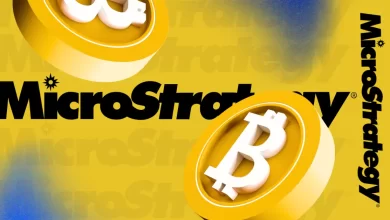
Solana’s reputation has long been tied to its throughput. High TPS, low latency and a thriving DEX environment positioned it as one of the fastest execution layers in the market. Speed shaped the chain’s identity, especially during periods when network congestion crippled older ecosystems.
A new challenge now enters that narrative. XRP Tundra’s architecture blends Solana execution with XRPL settlement, wraps both in audited tokenomics and implements liquidity controls that address issues speed alone cannot fix. As analysts revisit the assumptions behind Solana’s advantage, the discussion is shifting from raw throughput to system design — and the multi-chain approach introduced by XRP Tundra is redefining the comparison.
Why Solana’s Speed Doesn’t Solve the Hard Problems in DeFi
Solana’s strength has always been its performance ceiling. Traders value rapid order flow and low fees, and developers frequently choose the network for applications that require high-volume interactions. Yet speed does not address several practical challenges that shape user experience: liquidity manipulation, token launch stability, transparent distribution and verifiable team structure.

This is where competitive analysis now expands. Solana’s TPS allows rapid swaps, but launch phases across the ecosystem remain vulnerable to bots, early dump cycles and unpredictable price discovery. Throughput does not prevent distortion when liquidity pools open with no guardrails. That limitation provides an opening for ecosystems engineered around controlled liquidity and predictable token flow.
XRP Tundra enters that space with a model that uses Solana’s speed while introducing missing layers that the base blockchain does not provide. A recent overview by Token Empire highlighted how DeFi protocols are starting to differentiate by structure rather than execution speed alone, and XRP Tundra was used as a prime example of that shift.
XRP Tundra’s Dual-Chain System Introduces Capabilities Solana-Only Projects Can’t Match
The project uses Solana for its TUNDRA-S utility token, but the ecosystem extends to XRPL through TUNDRA-X, which anchors governance and reserve functions. This dual-chain arrangement creates two operational zones: Solana handles high-speed execution, while XRPL contributes settlement predictability, native XRP staking integration and an environment known for minimal failure rates.
This is where Solana’s speed narrative starts to bend. A Solana-only project must work within one execution environment. XRP Tundra distributes load across two: Solana’s throughput paired with XRPL’s reliability and deterministic settlement. The architecture allows cross-ecosystem capital flow, dual-chain airdrops and a staking future that ties together XRP liquidity and Solana validation through Cryo Vault systems.
The dual-chain setup also enables a presale model with confirmed listing levels: $2.50 for TUNDRA-S and $1.25 for TUNDRA-X. In Phase 11, TUNDRA-S is priced at $0.183 with a 9% token bonus, while TUNDRA-X is allocated free at its $0.0915 reference value. This combination is unavailable in Solana-native launches, which operate on single-chain token structures with limited distribution flexibility.
How XRP Tundra Uses Meteora’s DAMM V2 to Tame Solana’s Launch Volatility
Solana already has one of the strongest liquidity stacks in DeFi, and Meteora’s DAMM V2 sits near the center of that infrastructure. XRP Tundra doesn’t introduce DAMM to Solana; it uses DAMM in a way that directly targets the launch problems traders complain about most: bot rushes, instant dumps and chaotic early price discovery.
For TUNDRA-S, the team configures DAMM V2 with a dynamic fee scheduler that starts high and compresses over time. Early trades pay elevated fees, which makes automated sniping and short-term flipping far less attractive. As the pool matures, fees step down to more conventional levels, allowing organic trading to build depth without the usual opening shock. Solana’s throughput handles execution, while DAMM’s configuration shapes behavior around that speed.

Position NFTs and the option for permanent liquidity locks give TUNDRA-S an additional layer of stability. Liquidity providers can commit capital in ways that cannot be withdrawn during critical periods, and concentrated ranges keep order books from thinning at key levels. The combination turns Solana’s raw transaction capacity into a controlled environment instead of a free-for-all every time a new pool goes live. In practical terms, that is the part of Solana’s advantage XRP Tundra redefines: speed is still there, but now it runs inside a launch framework built to protect long-term holders.
Verification, Audits and Airdrop Architecture Create a Standard Beyond Raw TPS
Most Solana launches prioritize speed and community engagement over verification. XRP Tundra structures its process around documented oversight through the Cyberscope audit, the Solidproof audit and the FreshCoins audit. The development team is additionally verified through Vital Block KYC certification. Anyone checking is XRP Tundra legit is directed to the project’s official verification breakdown.
The distribution process also distinguishes the project from Solana-only launches. Instead of relying on claim portals or manual activations, the ecosystem delivers a synchronized dual-chain airdrop one hour before trading begins. TUNDRA-S is sent automatically to the registered Solana wallet and TUNDRA-X to the XRPL wallet. There are zero claiming fees and no gas costs for the distribution itself.
The team enforces strict wallet requirements. Only user-owned Solana and XRPL addresses are accepted, with centralized exchange addresses permanently disallowed. Any unsold tokens after 12 January 2026 will be burned, finalizing the supply without post-launch expansion. This level of procedural structure is rarely seen in speed-driven ecosystems.
Why Analysts Say Tundra’s Infrastructure Redefines What “Fast” Actually Means
Speed loses relevance when the surrounding systems cannot support predictable economics. XRP Tundra makes Solana’s throughput meaningful by pairing it with controlled liquidity, audited contracts, a two-chain settlement framework and a distribution method built to eliminate failure points. Analysts tracking this cycle’s capital rotation see the ecosystem as an example of how performance now depends on architecture, not only TPS.
The presale’s Phase 11 structure gives buyers discounted access to both tokens ahead of their listings, supports future entry into Cryo Vault staking and provides a documented roadmap up to and beyond launch day. As a comparison study, the project illustrates that throughput alone no longer defines blockchain performance. The systems built around that throughput determine the real advantage — and XRP Tundra constructed a model that reshapes how Solana’s speed is evaluated.
Join thousands of explorers building the next wave of cross-chain DeFi and secure your Phase 11 allocation today.
Buy Tundra Now: XRP Tundra website
How To Buy Tundra: step-by-step guide
Security and Trust: FreshCoins audit
Join the Community: X (Twitter)
Disclaimer and Risk Warning
The content featured on Coinpedia's press release page is provided for informational purposes only. Coinpedia does not endorse, verify, or take responsibility for the accuracy, completeness, or reliability of any press releases or associated materials. Any views, opinions, or statements expressed in these press releases are those of the respective issuers and do not reflect the opinions or positions of Coinpedia. Coinpedia is not liable for any content, products, services, or actions mentioned in the press releases. Readers should independently verify the information before taking any actions related to the subject matter of the releases.








